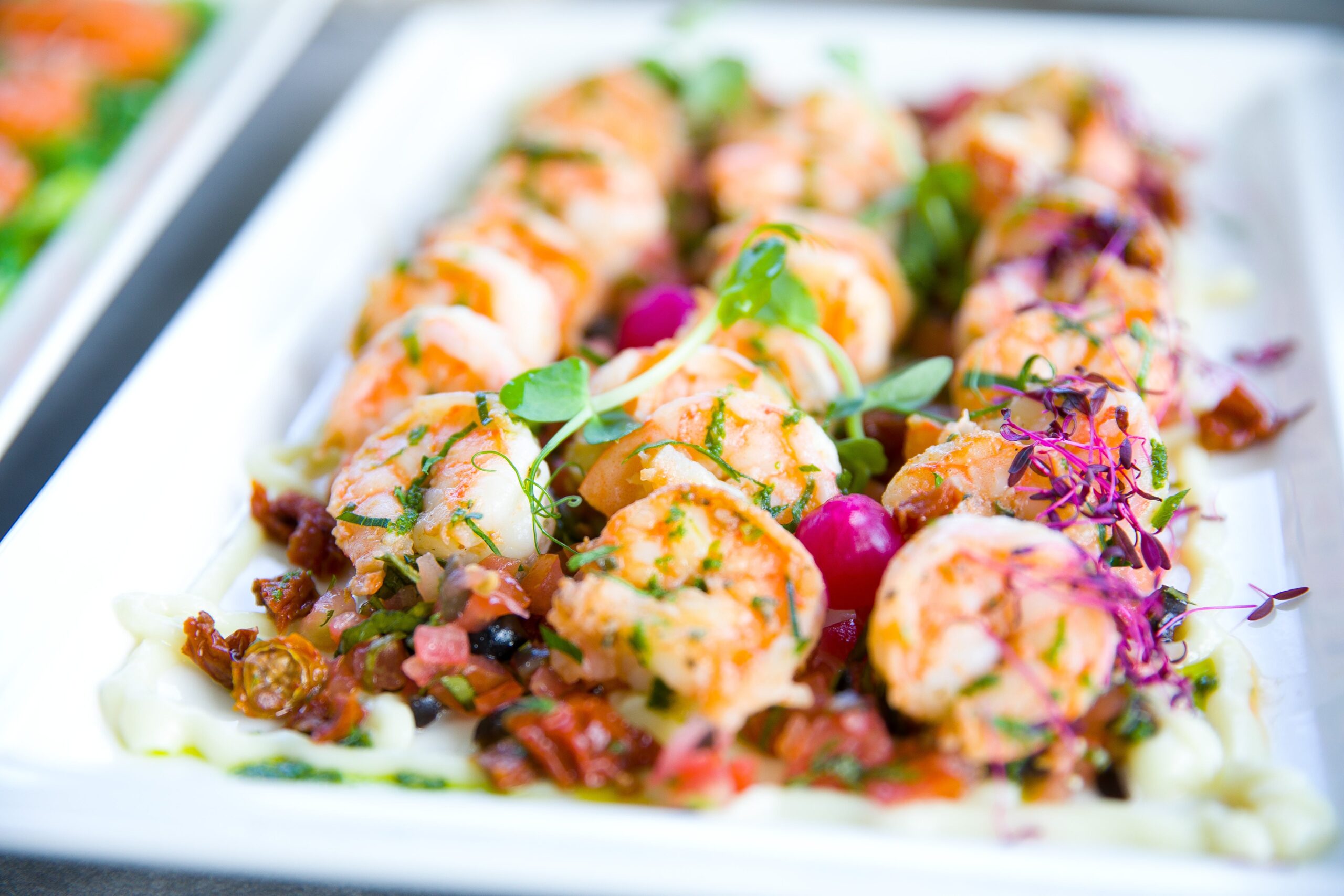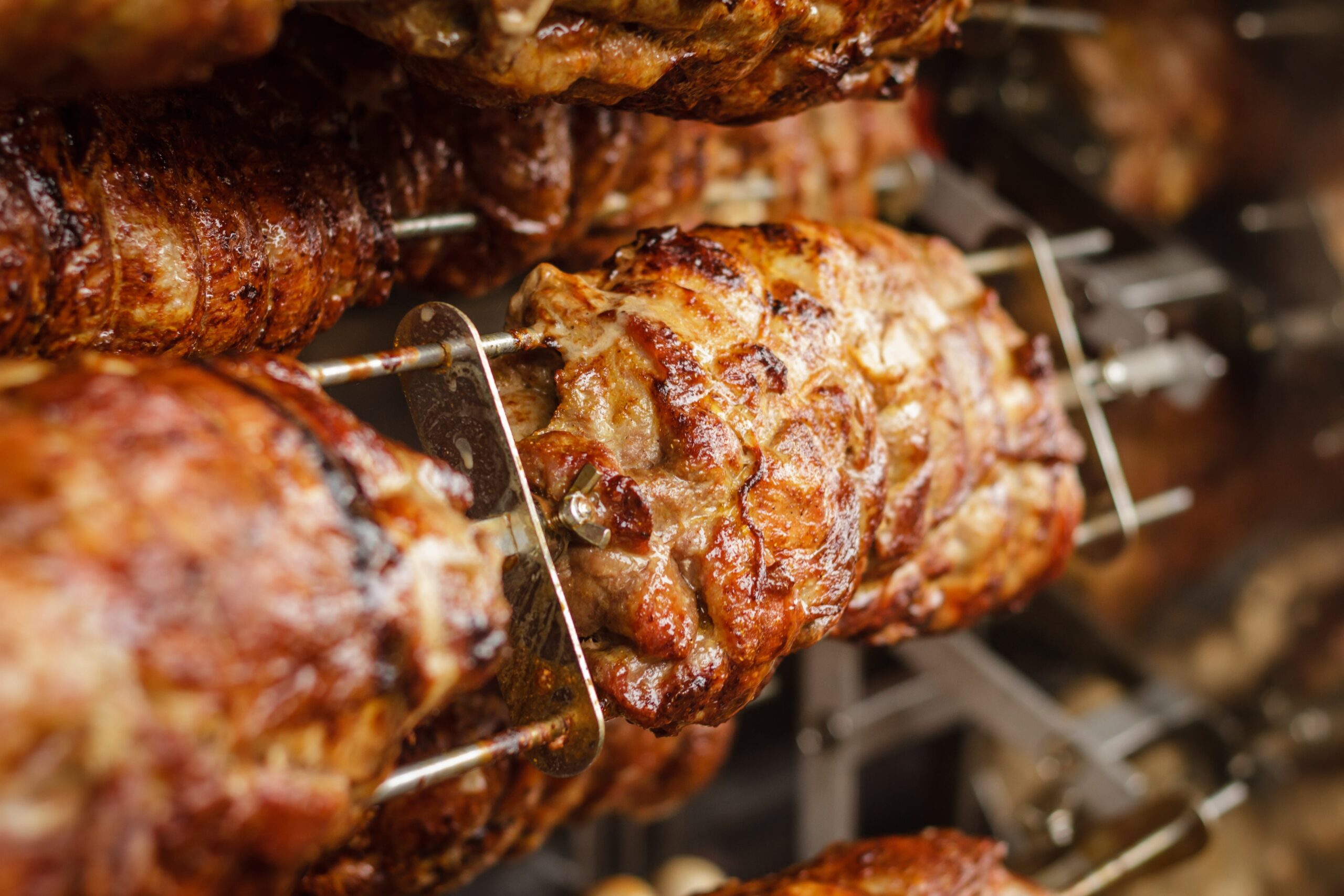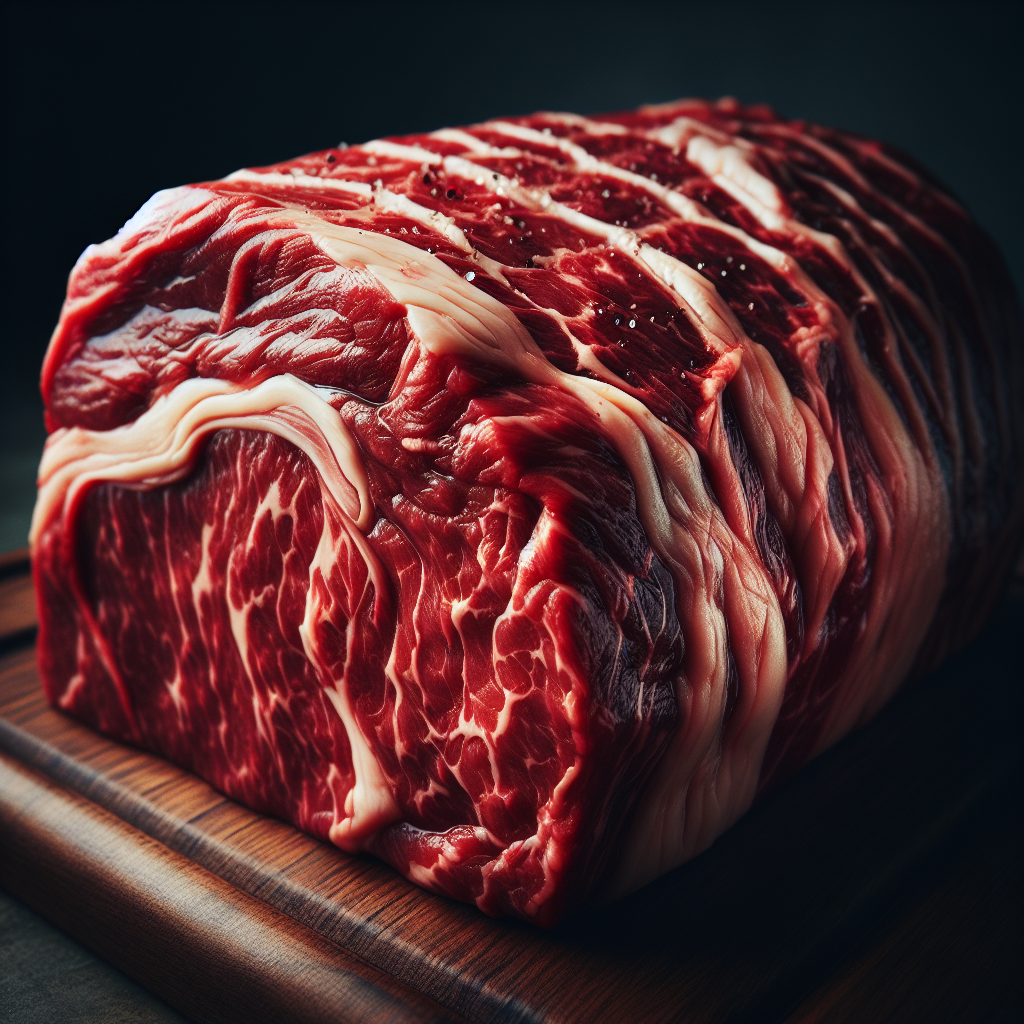Are you ready to take your cooking skills to the next level? Look no further, because Tastepan’s expert tips and techniques are here to help you master the art of cooking. Whether you want to enhance your knife skills, elevate your grilling game, or uncover the secrets of baking, our comprehensive guides and videos have got you covered. In this article, we will focus on the perfect oven roast, ensuring even cooking and a tantalizing flavor that will impress even the most discerning taste buds. Get ready to embark on a culinary journey that will transform you into a kitchen pro.

Choosing the Right Cut of Meat
When it comes to cooking the perfect oven roast, choosing the right cut of meat is essential. The right cut will ensure that your roast turns out tender, juicy, and full of flavor. There are a few factors to consider when selecting the perfect cut of meat.
Consider the Fat Content
The fat content of the meat plays a crucial role in the flavor and juiciness of your roast. A cut of meat with a higher fat content will generally be more flavorful and tender. However, too much fat can make the meat greasy. It’s important to find a balance that suits your taste preferences. Look for cuts of meat with a moderate amount of marbling, which is the fat that is dispersed throughout the muscle fibers. This will help keep the meat moist during cooking.
Look for Marbling
Marbling refers to the small streaks of fat that are distributed throughout the muscle fibers of the meat. This marbling not only adds flavor but also helps to keep the meat juicy and tender during cooking. When choosing a cut of meat, look for visible marbling throughout the meat. This will ensure that your roast is flavorful and delicious.
Choose the Right Size
The size of the roast you choose will depend on the number of people you are serving and your personal preferences. If you are serving a large group, a larger roast will be necessary. However, keep in mind that larger cuts of meat will require longer cooking times. For a smaller gathering or if you prefer leftovers, a smaller roast may be more suitable. It’s important to consider these factors when selecting the right size for your roast.
Consider the Bone-in Option
Choosing a bone-in roast can add an extra layer of flavor to your oven roast. The bone helps to distribute heat evenly throughout the meat, resulting in a more even cooking process. Additionally, the bone can enhance the flavor of the meat as it cooks. If you enjoy the taste of meat cooked on the bone, opting for a bone-in roast can be a great choice.
Preparing the Meat
Once you have chosen the perfect cut of meat, it’s time to prepare it for cooking. Proper preparation is crucial for ensuring a delicious and evenly cooked oven roast.
Brining the Meat
Brining your meat involves soaking it in a saltwater solution, known as a brine, before cooking. This process helps to add flavor and moisture to the meat, resulting in a juicier and more flavorful roast. To brine your meat, simply combine water, salt, and any desired seasoning or aromatics in a large container. Submerge the meat in the brine, cover, and refrigerate for several hours or overnight. Before cooking, be sure to rinse the meat thoroughly to remove excess salt.
Seasoning the Meat
Seasoning your meat is key to enhancing its flavor. Before cooking the roast, generously season it with your favorite herbs, spices, and seasoning blends. This will add depth and complexity to the taste of the meat. Be sure to season all sides of the roast evenly, and don’t be afraid to get creative with your seasonings.
Allowing the Meat to Rest at Room Temperature
Before placing your roast in the oven, it’s important to allow it to come to room temperature. This will ensure even cooking throughout the meat. Take the roast out of the refrigerator and let it sit at room temperature for about 30 minutes to an hour. This will help the roast cook more evenly and result in a juicier end product.

Setting the Oven Temperature
The oven temperature plays a significant role in achieving the perfect oven roast. It’s important to preheat the oven and adjust the temperature according to the specific cut of meat you are cooking.
Preheat the Oven
Before you begin cooking your roast, preheat your oven to the desired temperature. This allows the oven to reach the optimum heat level before you place the meat inside. Preheating your oven will help ensure even cooking and prevent any hot or cold spots that could affect the final result.
Adjust the Temperature According to the Cut of Meat
Different cuts of meat require different cooking temperatures to achieve the desired level of doneness. For example, a lean cut of meat might require a higher temperature for a shorter cooking time, while a cut with more fat and connective tissue may benefit from a lower temperature and slower cooking process. It’s important to refer to a reliable cooking chart or guide that provides specific temperature recommendations for different cuts of meat.
Using a Roasting Rack
Using a roasting rack is an excellent way to elevate your oven roast game. It offers several benefits and helps to ensure that your roast cooks evenly and retains its juiciness.
Benefits of Using a Roasting Rack
Using a roasting rack allows the heat to circulate around the meat, ensuring that it cooks evenly on all sides. This helps to prevent the bottom of the roast from becoming soggy or overcooked. Additionally, a roasting rack elevates the meat off the bottom of the roasting pan, allowing air to circulate under the roast. This helps to promote even browning and crispness.
How to Use a Roasting Rack
To use a roasting rack, place it inside a rimmed baking sheet or roasting pan. Make sure the rack is sturdy enough to hold the weight of the roast. Place the seasoned roast on top of the rack, ensuring that it is centered. This will allow for even cooking and browning. The juices and drippings from the roast will fall onto the baking sheet or pan, which can then be used to make a flavorful gravy or sauce.

Adding Flavor with Aromatics
Aromatics are a great way to add depth and complexity to your oven roast. They infuse the meat with additional flavors and aromas, taking your roast to the next level.
Choosing the Right Aromatics
When selecting aromatics for your roast, there are many options to choose from. Common aromatics include garlic, onions, herbs like rosemary and thyme, and spices like cinnamon or cloves. The choice of aromatics will depend on your personal preferences and the flavor profile you wish to achieve. Experiment with different combinations to find the perfect blend of flavors.
Proper Placement of Aromatics
To infuse your roast with the flavors of the aromatics, you can place them directly on top or around the roast. For example, you can insert garlic cloves into the meat or scatter onions and herbs on top. This will allow the flavors to penetrate the meat as it cooks, resulting in a flavorful and fragrant roast.
Monitoring the Cooking Time
Properly monitoring the cooking time is crucial to ensure that your roast reaches the desired level of doneness without overcooking.
Using a Meat Thermometer
A meat thermometer is an essential tool for accurately measuring the internal temperature of your roast. Different cuts of meat have different ideal internal temperatures for various levels of doneness. Inserting the thermometer into the thickest part of the roast will give you an accurate reading. Be sure to consult a reliable cooking chart or guide to determine the appropriate internal temperature for your specific cut of meat.
Understanding Cooking Time Guidelines
While using a meat thermometer is the most accurate way to determine doneness, it’s also helpful to have a general understanding of cooking time guidelines. These guidelines can provide a rough estimate of the cooking time based on the weight and type of meat you are cooking. Keep in mind that these are just estimates and should be used as a starting point. It’s always best to rely on a meat thermometer for precise measurements.
Basting the Meat
Basting is an important technique that involves periodically coating the meat with its own juices or a flavorful liquid during the cooking process. It helps to keep the meat moist and infuses it with additional flavors.
Why Basting is Important
Basting helps to prevent the meat from drying out during the cooking process. It also adds layers of flavor as the juices or liquid you use for basting mix with the meat’s natural juices. Additionally, basting helps to promote even browning and caramelization, enhancing the visual appeal of the roast.
How to Baste the Meat
To baste the meat, simply remove it from the oven at regular intervals and use a basting brush or spoon to drizzle the juices or liquid over the roast. Be sure to coat the entire surface of the meat. Depending on your recipe and personal preference, you can baste the roast as often as every 30 minutes or as little as once or twice during the cooking process. Remember to work quickly to minimize the amount of heat lost from the oven.
Resting the Meat
Resting the meat after it has finished cooking is a crucial step that should not be overlooked. This allows the juices to redistribute throughout the meat, resulting in a more tender and flavorful roast.
Importance of Resting
Resting the meat allows the juices to settle and redistribute. If you were to immediately slice into the roast after it comes out of the oven, the juices would run out, leaving you with a drier roast. Resting gives the fibers in the meat time to relax and reabsorb the juices, resulting in a more tender and succulent final product.
Ideal Resting Time
The ideal resting time for your roast will depend on its size. As a general rule, smaller cuts of meat should rest for about 10 to 15 minutes, while larger roasts may require up to 30 minutes. During this time, tent the roast with foil to keep it warm and prevent it from cooling too rapidly.
Slicing and Serving
Properly slicing and serving your oven roast is the final step in creating a delicious and visually appealing dish.
Slicing Techniques
To achieve even slices, it’s important to carve the roast against the grain. This means cutting across the muscle fibers rather than with them. This will result in more tender slices. Use a sharp carving knife and slice the meat into thin or thick slices, depending on your preferences.
Serving Suggestions
When it comes to serving your oven roast, there are countless options. You can serve it with traditional sides like roasted potatoes and vegetables, or get creative and experiment with different flavor combinations. From classic au jus to creamy horseradish sauce, there are plenty of accompaniments to elevate your roast to the next level. Don’t be afraid to get creative and let your taste buds guide you.
Troubleshooting Tips
Even the most experienced cooks can run into challenges when it comes to oven roasts. Here are some common troubleshooting tips to help you overcome any obstacles you may encounter.
Uneven Cooking
If you find that your roast is cooking unevenly, with some parts being overcooked while others are underdone, there are a few possible solutions. First, ensure that your oven is heating evenly by using an oven thermometer. If your oven has hot spots, you can rotate the roast periodically during cooking to promote more even heating. Using a roasting rack can also help ensure even cooking by allowing the heat to circulate around the meat.
Dry Meat
Dry meat can be a result of overcooking or not properly resting the roast after it comes out of the oven. To prevent dryness, be sure to monitor the internal temperature of the roast using a meat thermometer. Remove the roast from the oven when it reaches the desired internal temperature and allow it to rest before slicing. Resting will help the meat retain its juices and result in a moist and flavorful roast.
Overcooking
Overcooking can result in a dry and tough roast. To prevent this, be sure to monitor the internal temperature of the meat using a meat thermometer. Remove the roast from the oven when it reaches the desired level of doneness. It’s important to note that the internal temperature will continue to rise for a few minutes after the roast is removed from the oven, so it’s best to slightly undercook it and allow it to rest. Proper resting will help the meat finish cooking and reach the desired level of doneness without overcooking.
In conclusion, cooking the perfect oven roast requires careful consideration in choosing the right cut of meat, proper preparation, and precise cooking techniques. By considering factors such as fat content, marbling, size, and bone-in options, you can ensure a flavorful and tender roast. Preparing the meat through brining, seasoning, and allowing it to rest at room temperature contributes to a juicy and delicious result. Setting the oven temperature correctly and using a roasting rack promotes even cooking. Adding flavor with aromatics, monitoring the cooking time, basting, resting, and utilizing proper slicing and serving techniques elevate the overall experience. And if any troubleshooting is needed, addressing issues such as uneven cooking, dry meat, or overcooking can help overcome challenges. With these tips and techniques, you’ll be well on your way to mastering the art of cooking the perfect oven roast. Bon appétit!

